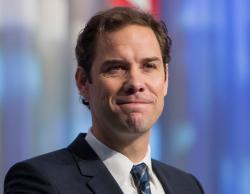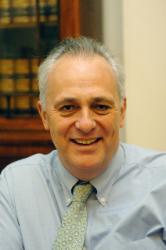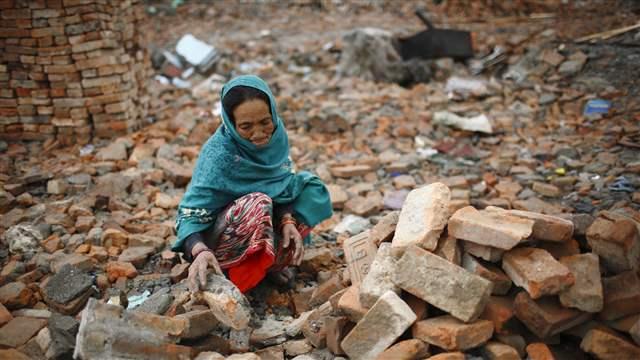The Challenge
Over the past generation, the world has achieved remarkable success in reducing the number of people living on less than US $1.25 per day. According to recent World Bank estimates, the first Millennium Development Goal (MDG) for halving extreme poverty was reached globally by 2010. In 1990, 43% of the developing world lived in extreme poverty. Today, the figure has dropped to roughly 21%.
Nonetheless, more than 1 billion people still live on less than US $1.25 per day, so there is still a major challenge in sustainably tackling the “second half” of extreme poverty. We recommend a vision of “getting to zero” by 2030, as recently outlined by Aryeetey et al. (2012). The task remains especially important among the fast-growing populations of South Asia, where more than one in three people still live in extreme poverty, and in sub-Saharan Africa, where the ratio is nearly one in two.
But the coming generation must also raise its sights beyond finishing the job on extreme poverty. Today, roughly 43% of the developing world lives under the poverty line of US $2/day, i.e. the same proportion that lived below US $1.25 in 1990. The updated global task through to 2030 is therefore double-barrelled: first, to eliminate extreme poverty and, second, to cut US $2/day poverty by at least half.
The MDGs have formed the central reference point for global development efforts since they were established as international targets in 2000. A new generation of development goals will soon be needed. Like the MDGs, they will need to address much more than boosting incomes. A broad framework of Getting to Zero entails ending chronic hunger, ensuring universal access to secondary education, ensuring universal access to safe drinking water and sanitation, reducing child and maternal deaths to current upper middle-income country levels, and tackling key environmental priorities that will underpin development success. Achieving this suite of goals will in turn reinforce further progress in economic growth.
The pursuit of new goals will need to surmount a crucial tension. On one side stands the need for simplicity and consistency. Lengthening the list of goals or adding a perceived “grab bag” of targets is likely to diminish a framework’s political traction for implementation. On the other side stands the need for adaptation to new realities. The entire world is developing a shared sense of a sustainability imperative alongside the risks of inequality. A large (and growing) share of the extreme poor is now located in middle-income countries and fragile states. Issues like energy, climate change, food prices and population growth will interact to produce new and unpredictable challenges.
An Initiative for Action
Amid the complex and multi-layered discussions on the need for “sustainable development goals” to guide a post-2015 global agenda, we recommend that Rio+20 establishes guiding principles to ensure goals for Getting to Zero are consolidated as at least one primary component of any overarching framework through to 2030. And while governments surely maintain primary responsibility to address the needs of their people, the successful implementation of any such framework will require broad inputs from – and perhaps corresponding targets for – non-governmental stakeholders, including civil society, the private sector and academia.
What to Do
At a more practical and immediate level, we underscore two categories of innovations that can be launched more immediately to support poverty reduction over the coming five to 10 years. Each will require a coalition of entrepreneurs spanning both public and private sectors.
- A “Missing Rural Middle” Guarantee Fund for Africa: Much of sub-Saharan Africa’s poverty is constrained by low productivity subsistence agriculture and the lack of an African Green Revolution. Throughout the region, smallholder farmers have almost no access to market-based credit that is adequate in scale, risk-adjusted to account for Africa’s unique climate and pest risks, and structured over extended maturities to allow for season-to-season experimentation as farmers introduce new crops. Recognizing the very limited asset base available for collateral, farmers also need to pool efforts in order to access inputs and market connections at manageable cost. This implies private cooperatives or farmers’ associations.
A financing vehicle is therefore needed to provide these farmer groups with access to “patient capital” loans of perhaps US$ 25,000-US$ 100,000 at a time. The mechanism should launch in the context of a broader ecosystem of business support and agricultural extension services that help farmers identify market opportunities, develop business plans, introduce new farming techniques and implement marketing programmes. The financing facility would focus on the risk-adjustment component of private capital. To reach 25 million smallholders over five years (roughly one-quarter of the total), annual public financing on the order of US $5 billion would be required to backstop US $25 billion of annual private lending. Institutionally, the vehicle could be framed as the African smallholder equivalent of the International Finance Corporation.
- Universal Access to Bank Accounts and Smart Cards: More than two-thirds of adults in the developing world are estimated to be without a bank account. And the poorest-of-the-poor typically lack any means to claim or assert access to public services. This is increasingly anachronistic in a world that is fast approaching universal access to cheap broadband mobile telephony.
Following the early regulatory and entrepreneurial lessons of mobile banking in countries like Kenya, there is no reason why governments and financial institutions cannot partner with technology providers to establish programmes by which every adult in the world has access to a low-cost savings account, a major enabler for escaping from poverty. Depending on the evolution of cost curves, these accounts could be accessed either through their mobile phone or smart phone, or through a “smart card” that can interact with someone else’s phone.
The same system of smart cards could serve as an interface for accessing government services and programmes, ranging from emergency health services to farmer input vouchers to conditional cash transfers. Nearly 5 billion new mobile phone accounts were added between 2000 and 2010. At least 1 billion savings accounts and smart cards should be issued by 2020.





